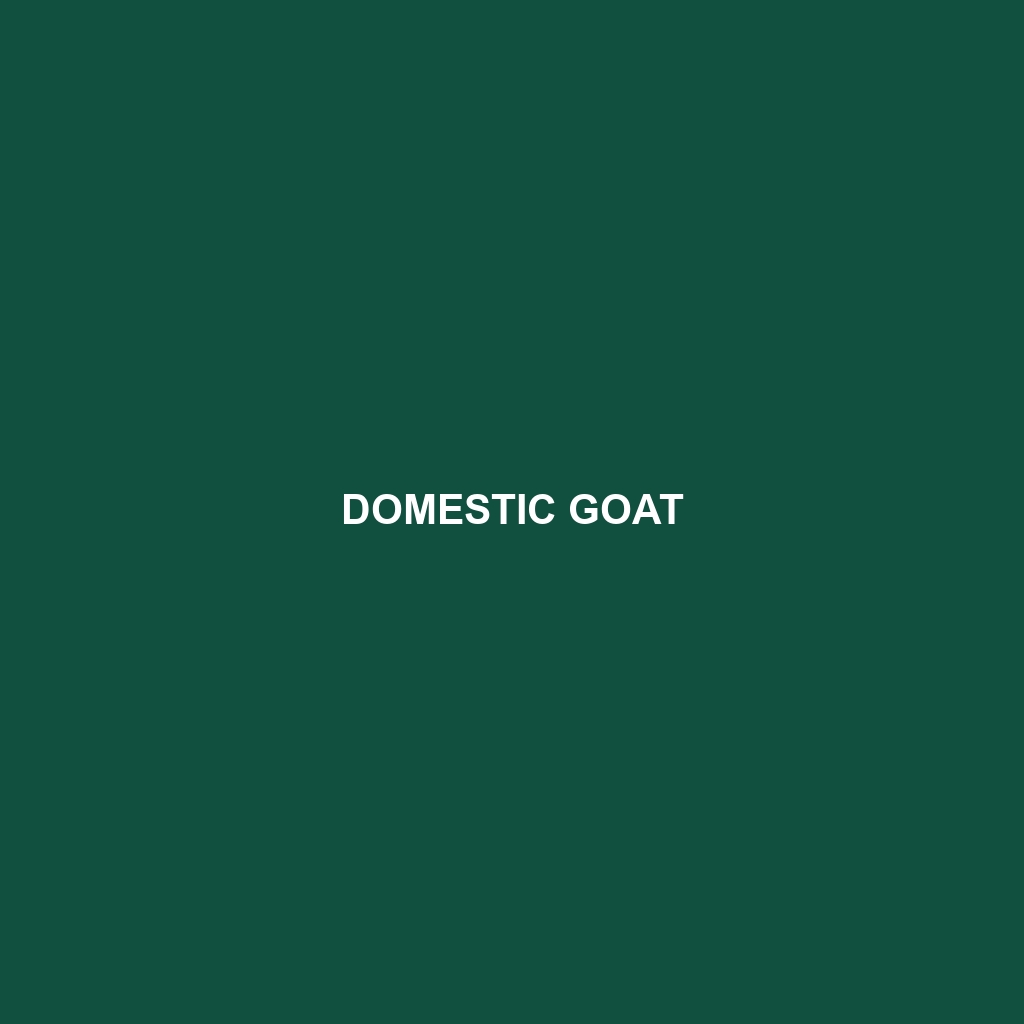Species Description: Domestic Goat
Common Name: Domestic Goat
Scientific Name: Capra aegagrus hircus
Habitat
The Domestic Goat is primarily found in a variety of habitats across the globe, ranging from mountainous regions to grassy plains. These versatile animals are commonly found in countries such as the United States, China, India, and parts of Africa and Europe. They thrive in environments that provide plenty of grazing space, including open pastures, scrublands, and rocky terrains.
Physical Characteristics
Domestic Goats typically weigh between 45 to 300 pounds, depending on their breed. They exhibit a range of colors, from classic white and black to shades of brown and gray. Their bodies are generally nimble and muscular, with short to medium-length hair and distinct features such as long ears and curving horns. Some breeds, like the Nubian and Alpine, are particularly noted for their unique appearances, including floppy ears and varying coat patterns.
Behavior
Domestic Goats are social animals known for their curious and playful nature. They often form strong bonds with both humans and other goats, displaying behaviors such as grooming and vocalizing. Goats are also known for their agility, often seen climbing on rocks and structures in their environment. Their inquisitive behavior leads them to explore and interact with their surroundings, making them entertaining and engaging livestock.
Diet
Goats are herbivorous grazers that primarily feed on grasses, herbs, leaves, and even shrubs. Their unique digestive systems allow them to efficiently process a wide variety of plant materials, making them adaptable feeders. Common food sources include hay, pasture grasses, and browse from trees and bushes. This diverse diet also means that they can help manage vegetation in agricultural and wild settings.
Reproduction
The reproductive habits of Domestic Goats are seasonal, with most breeding occurring in the fall. Gestation lasts approximately 150 days, resulting in the birth of one to three kids at a time. Female goats, or does, are particularly attentive mothers. Kid goats are typically able to stand and walk shortly after birth, showcasing their quick development—a crucial adaptation for survival in the wild.
Conservation Status
Currently, the Domestic Goat is not classified as endangered; rather, it is a domesticated species that thrives in diverse environments. However, certain wild relatives may be considered vulnerable due to habitat loss and hunting pressures. Conservation efforts are focused on maintaining the genetic diversity of goat breeds.
Interesting Facts
Domestic Goats have been companions to humans for thousands of years, providing milk, meat, and wool. They are also known for their remarkable intelligence and problem-solving skills, often using their ability to navigate complex environments to escape enclosures or find food.
Role in Ecosystem
In their ecosystems, Domestic Goats play a significant role in vegetation management. By grazing on various plant species, they help prevent overgrowth, facilitating a balanced ecosystem. Their foraging habits can also support biodiversity by promoting the growth of specific plants while controlling invasive species.
